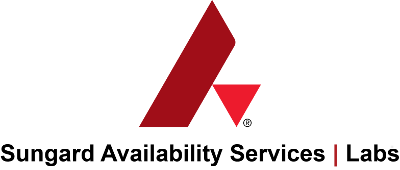lambda-formation
v0.1.11
Published
A small framework for building nodejs AWS Lambda projects that are compatible with AWS CloudFormation Custom Resources
Downloads
67
Readme
lambda-formation
A small framework for building nodejs AWS Lambda projects that are compatible with AWS CloudFormation Custom Resources.
The functions in a lambda-formation project can also be run directly through the AWS Lambda API. They will work with but do not rely on AWS CloudFormation.
Getting Started
Use the Yeoman generator generator-lambda-formation
yo lambda-formation:project my-lambda-formation-projectNow lets create a resource:
cd my-lambda-formation-project
yo lambda-formation:resource resource1Now you have a project structure similar to the following:
- my-lambda-formation-project
|- .gitignore
|- LICENSE
|- README.md
|- index.js
|- lib
|- resources
|- README.md
|- resource1
|- create.js
|- delete.js
|- index.js
|- update.js
|- package.jsonAdd as many resources as necessary. A resource will map directly to a
CloudFormation Custom Resource. Beneath each resource a skeleton for controling Create,
Update and Delete request types have be generated.
How does it work?
The project is designed so that calling a function from CloudFormation is as seamless as possible.
For the following Custom Resource definition:
{
"AWSTemplateFormatVersion": "2010-09-09",
"Resources": {
"MyLambdaFormationResource": {
"Type": "Custom::resource1",
"Properties": {
"ServiceToken": ARN_OF_LAMBDA_FORMATION,
"myFirstProperty": "First Property",
"mySecondProperty": {
"name": "A Sub Property"
}
}
}
}
}CloudFormation will run the lamda code at ARN_OF_LAMBDA_FORMATION,
which is the zip of the lambda-formation project.
In this example lambda-formation will load resource1 based on the
Custom::resource1 type. If this project had multiple resources any
other resource could be executed by NAME with Custom::NAME.
If this is the first execution of the CloudFormation stack the handler in create.js
will be executed. When the stack is updated the handler in update.js is executed.
When the stack is removed the handler in delete.js is executed.
Direct call through Lambda
While the structure is designed to work with CloudFormation any handler can be called directly though Lambda.
The main handler in the root index.js file is a router that can get
to any resource in the project.
Parameters to the main handler support multiple cases for the first letter. CloudFormation defaults to capitals while it is convention for most other node project to use lower case. This project supports both.
resourceType|ResourceType - Name of the resource to load. Will
forward to the handler in the index.js file of the named resource.
requestType|RequestType - Name for the type of request
Create|Update|Delete. Can also be one of create|update|delete
Direct Lambda execution:
{
"requestType": "delete",
"resourceType": "resource1",
"myCustomParam": "myCustomValue"
}Cross-Region Support with SNS
For regions that do not support Lambda, an SNS topic can be set as the
ServiceToken in the CloudFormation template.
Example
Run a CloudFormation Template sa-east-1 (as of this release does not
support Lambda) that uses lambda-formation resources in
us-east-1.
- Upload the lambda-formation project to us-east-1 (or other Lambda supported region)
- Create an SNS Topic in
sa-east-1 - Subscribe the lambda-formation function from step #1 to the SNS Topic in step #2
- Launch CloudFormation in
sa-east-1with theServiceTokenset to the SNS Topic set in step #2
lambda-formation will take care of processing the SNS message and responding to the CloudFormation stack
Where does my code go?
The create.js, update.js and delete.js files under each resource
in lib/resources is where any code or modules should be added.
Add code directly to the stubbed functions or write a module
and require it here. Please do not alter the handler function.
This function controls the routing and execution response based on
direct Lambda versus CloudFormation calls.
Resources
Each resource file will have a create, update or delete funciton
respectively. The only requirement is that util.done is called when
any custom code has finish processing. The util.done function will
prepare the responce for CloudFormation or as a return directly to
Lambda and complete the context for the execution.
util.done(err,event,context[,data,id]);On success err should be null
The event and context objects are required and can simply be passed
through.
The data parameter is optional and if included must be null or an object of key/value pairs
that describe resource. When executed though CloudFormation the
keys will be availbale as Resource Outputs. For direct Lambda calls the
object will be sent to context.done.
The id parameter is only required for 'create.js'. This will be
the ID CloudFormation will use to track the resource. If id is
provided then data must also be defined.
Logging
Logging is pre-configured via the winston library and can be included via lambda-formation:
var logger = require('lambda-formation').logger;Within your code use the winston shortcut methods log, info, debug:
logger.log('info', 'My messages');
logger.info('My message');
logger.debug('My message');
...Framework internal logs will be logged with log-level debug.
To enable them to be logged to CloudWatch set the environment variable CFN_LOG_LEVEL to debug.
Examples
Sungard Availability Services | Labs
This project is maintained by the Labs team at Sungard Availability Services
GitHub: https://sungardas.github.io


